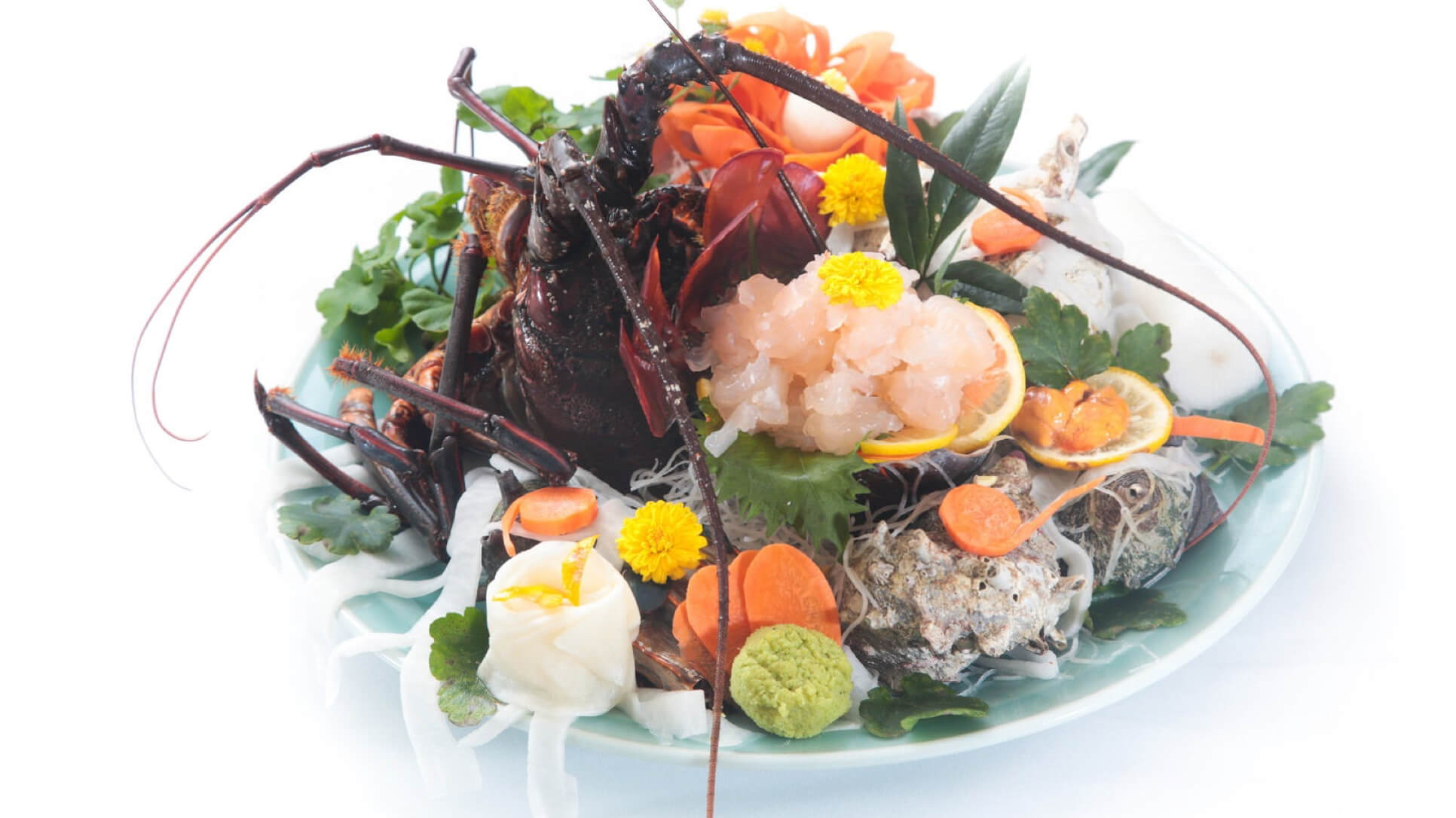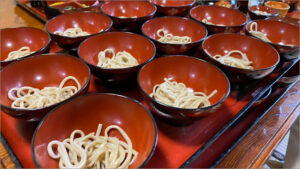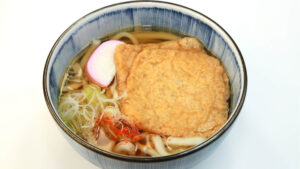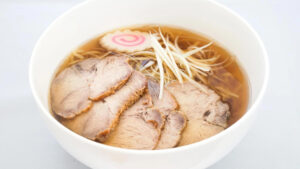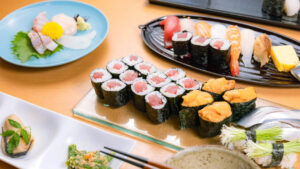When visiting Japan, one traditional dish you simply must try is sashimi. This deceptively simple yet deeply refined culinary practice—eating fresh raw fish—showcases both the natural flavor of the ingredients and the delicate techniques of Japanese chefs. It’s a form of edible art.
In this article, we’ll introduce everything you need to know about sashimi: from its basics and popular fish types, to proper dining etiquette, regional experiences, and even how to enjoy sashimi at home. Whether you’re new to sashimi or looking to deepen your appreciation, we’ll guide you with practical tips and cultural insights.
Ready to discover the rich world of sashimi? Let’s dive into the essence of Japanese flavor and tradition.
Contents
- 1 What Is Sashimi? A Signature Dish of Japanese Culinary Culture
- 2 Must-Try Sashimi: From Classics to Unique Delicacies
- 3 How to Properly Enjoy Sashimi: Basic Etiquette and Manners
- 4 Fun Facts to Further Enjoy Sashimi
- 5 Experience the Culture of Sashimi in Japan
- 6 Explore the World of Sashimi—Freely and Joyfully
What Is Sashimi? A Signature Dish of Japanese Culinary Culture
Sashimi is one of the must-try dishes for many travelers visiting Japan. Though it may look simple at first glance, each plate embodies the essence of Japanese cuisine—freshness of ingredients, masterful knife skills, and a refined sense of presentation. The style of enjoying raw seafood as-is reflects Japan’s unique culinary philosophy of highlighting the natural flavor of ingredients.
In this section, we’ll explore what sashimi really is: its definition and historical background, how it differs from sushi, and why freshness is so critically important in sashimi culture.
Definition and History of Sashimi
Sashimi is a traditional Japanese dish made by slicing fresh seafood—mainly fish—into thin pieces and serving them raw. It’s not limited to fish; variations include shellfish, octopus, sea urchin, and even horse meat in some regions. The preparation is kept minimal to preserve the natural flavor and texture of each ingredient.
The term “sashimi” has been in use since the Muromachi period (14th–16th century). Originally, a fin or tail was inserted into each slice of fish to indicate its species. This simple yet elegant serving style developed into a form of high cuisine, especially favored among samurai families and the imperial court.
How Is Sashimi Different from Sushi?
Sashimi is often confused with sushi, as both involve raw fish. However, the key difference lies in the presence of rice.
Sashimi is raw seafood served on its own, allowing you to fully appreciate the ingredient’s natural flavor.
Sushi, on the other hand, combines raw fish with vinegared rice, creating a harmony between the two elements.
In other words, while sashimi focuses on the pure taste of the seafood itself, sushi is about enjoying the balance between fish and rice.
The Origins of Sashimi in Japan
Sashimi has ancient roots in Japan, with references found as far back as the Heian period (794–1185). However, it wasn’t until the Edo period (1603–1868) that sashimi became more widespread. In earlier times, due to limited preservation methods, eating raw fish was a luxury reserved for the elite.
As distribution systems and refrigeration technology developed, sashimi became more accessible to the general public. Today, it’s a familiar dish even at home. Each region of Japan has also cultivated its own sashimi culture—for example, in Kyushu, a sweeter soy sauce is commonly used to complement the local catch.
Why Freshness Is Everything
Freshness is the most essential aspect of sashimi. Since the fish is served raw and without any heat treatment, its taste, aroma, and texture all depend on how fresh it is. The fresher the seafood, the sweeter and richer the umami becomes, resulting in a melt-in-your-mouth experience.
To prevent foodborne illness, sashimi must also be handled with strict hygiene standards. In Japan, an efficient and carefully maintained supply chain—from fishing port to market to restaurant—ensures optimal freshness and safety.
Eating sashimi is more than just enjoying a meal—it’s an experience of receiving nature’s bounty in its purest form, embodying the Japanese spirit of culinary precision and beauty.
Comparing Sashimi with Other Raw Food Cultures Around the World
Sashimi is widely known as a uniquely Japanese dish, but the practice of eating raw fish or meat actually exists in many cultures around the world. Famous examples include South American ceviche and Italian carpaccio.
In this section, we’ll compare these global raw dishes with sashimi, explore Japan’s unique philosophy and techniques surrounding raw food, and explain how simplicity brings out the natural umami in sashimi.
How Sashimi Differs from Ceviche and Carpaccio
Ceviche, which originated in Peru, features fresh seafood marinated in citrus juices such as lemon or lime. The acid in the juice partially “cooks” the fish by denaturing its proteins. Herbs, onions, and chili peppers are then added to create a bright and refreshing flavor.
Carpaccio, an Italian creation, consists of thinly sliced raw beef or fish, topped with olive oil, cheese, or lemon juice. While the ingredients remain raw, various sauces and toppings are used to enhance the dish.
Sashimi, by contrast, is typically served without any added sauces or garnishes. While soy sauce and wasabi may accompany it, they are considered supporting elements—never the main feature. The goal is to highlight the purity of the raw ingredient itself.
Japanese Knife Techniques in Sashimi Preparation
One of the most important aspects of sashimi is the knife technique. The angle, thickness, and pressure used when slicing fish all affect its flavor and texture.
- Hikizukuri: A basic technique using a single pulling stroke to slice the fish cleanly without crushing the flesh.
- Sogigiri: A method of slicing diagonally to create broader, thinner pieces—commonly used for white fish like sea bream.
- Kakuzukuri: A chunkier cut that preserves the firm texture of red fish like tuna.
These techniques are carefully chosen to preserve the integrity of the fish’s fibers, ensuring that each bite melts in the mouth. Even with minimal preparation, sashimi reflects the precision and elegance of Japanese culinary craftsmanship.
The Power of Simplicity in Highlighting Umami
Sashimi brings out the full potential of an ingredient’s umami by not adding unnecessary elements. This is a core principle of Japanese cuisine, often described as “the art of subtraction.”
- Fresh sea bream, though mild in flavor, reveals deep umami without even salt or lemon.
- Lean tuna (akami) becomes richly flavorful with just a touch of wasabi and soy sauce.
- White fish may be paired with shiso leaves or ponzu to enhance balance and fragrance.
Japanese sashimi culture is grounded in the belief that the ingredient itself is the star. Its simplicity demands the highest standards of freshness, technique, and aesthetic sensitivity—making every plate a profound culinary expression.
Seasonal and Regional Variations in the Taste of Sashimi
When exploring the culture of sashimi in Japan, two key aspects you can’t overlook are seasonality and regional variety. Japan is a long, narrow island country with four distinct seasons, and the types of fish and ways of enjoying sashimi vary depending on the time of year and the region.
By understanding these differences, you’ll be able to appreciate sashimi on a deeper level.
Recommended Fish by Season
In Japan, there’s a strong belief that each fish has its best season (shun). Eating fish at its seasonal peak means enjoying it at its most flavorful and fresh.
- Spring (March–May): Sea bream (tai), halfbeak (sayori), and early-season bonito (hatsugatsuo)
→ Light, refreshing flavors are preferred as spring arrives. - Summer (June–August): Squid, horse mackerel (aji), and white trevally (shima-aji)
→ White fish and light blue fish are popular in the hot months for their clean taste. - Autumn (September–November): Return bonito (modori katsuo), autumn mackerel, and Pacific saury (sanma)
→ A rich season with many fatty fish, offering bold and deep flavors. - Winter (December–February): Winter yellowtail (kan-buri), flounder (hirame), and cod (tara)
→ Fish from cold waters are firmer and fattier. Winter is considered the ultimate sashimi season.
Choosing sashimi based on the season allows you to savor the unique tastes that nature offers throughout the year.
Regional Characteristics from Hokkaido to Kyushu
Sashimi styles and fish types also vary by region. Each area in Japan has its own local seafood and traditional ways of preparing and enjoying it.
- Hokkaido: Sea urchin (uni), scallops, salmon
→ Cold waters produce seafood that’s rich and sweet. Shellfish are especially popular. - Tohoku (northeast): Flounder, squid, flatfish
→ Known for delicate white fish. Preservation methods like kelp-curing (kombu-jime) are often used. - Kanto (Tokyo area): Tuna (especially from Tsukiji or Toyosu), bonito
→ Influenced by Edomae sushi culture, red-fleshed fish are widely enjoyed. - Kansai (Kyoto/Osaka area): Sea bream, conger eel (anago), pike conger (hamo)
→ Closely tied to Kyoto cuisine, emphasizing visual elegance and refined presentation. - Kyushu: Greater amberjack (kanpachi), yellowtail (buri), mackerel (saba)
→ Rich, fatty fish are common. Sweet soy sauce is often used as a local flavor accent.
Trying local sashimi while traveling through Japan is a wonderful way to experience the country’s regional diversity.
Seasonal Garnishes and Decorative Touches
Sashimi isn’t just about the fish—it’s also about presentation. Seasonal garnishes and artistic plating are essential to the full experience.
- Spring: Cherry blossom leaves, kinome herbs, and rapeseed flowers add seasonal flair.
- Summer: Shiso leaves, myoga ginger, and fresh grated ginger offer refreshing flavors.
- Autumn: Maple leaves, sudachi citrus, and yuzu provide richness in both color and aroma.
- Winter: Garnishes like daikon radish threads or intricate carrot cuts add clarity and elegance.
The shredded daikon (called tsuma) or seaweed often placed under sashimi is not just for decoration—it also reflects seasonal sensibility. Even the plate’s color and material are chosen to match the time of year.
In this way, sashimi is not only a dish to be tasted, but one to be appreciated with the eyes—a culinary art form deeply connected to nature’s rhythms.
Must-Try Sashimi: From Classics to Unique Delicacies
The world of sashimi is incredibly diverse—each type of fish offers a completely different taste, texture, and appearance. For first-time visitors, starting with the most popular and widely enjoyed sashimi is a great way to ease into this traditional cuisine.
Here, we introduce three classic sashimi varieties that are beloved at restaurants and in homes across Japan.
Popular and Classic Types of Sashimi
Tuna (Maguro)
Tuna is often called “the king of sashimi” and is the most iconic choice. It comes in several cuts, each offering a different balance of flavor and fat content.
- Akami (lean meat): Moist and light in flavor. A good starting point for beginners.
- Chutoro (medium-fat belly): A perfect balance of richness and tenderness.
- Otoro (fattest belly): Rich and buttery, melts in your mouth with luxurious flavor.
Tuna is served at nearly every sushi and Japanese restaurant nationwide. Its deep, simple flavor pairs beautifully with wasabi and soy sauce, offering a straightforward yet profound experience.
Salmon
Salmon is especially popular among international visitors. Its creamy texture and subtly sweet fat appeal to both children and adults alike.
- The vivid orange flesh contrasted with white marbling is visually appetizing.
- Serving it with lemon or sudachi adds a refreshing touch.
- Variations with sliced onions or mayonnaise are also common and well-loved.
Although raw salmon was not traditionally eaten in Japan, it became a sashimi staple thanks to imports from Norway and advancements in aquaculture. Today, it is one of the most accessible and loved sashimi options.
Yellowtail / Buri (Hamachi / Buri)
“Hamachi” and “Buri” are names for the same fish at different stages of growth—Hamachi refers to the younger fish, while Buri is the mature version. Both are popular for sashimi, known for their flavorful, fatty flesh.
- Hamachi: Firm yet tender, with a clean, mild flavor and moderate fattiness.
- Buri: Reaches peak season in winter as “kan-buri,” prized for its rich, fatty taste.
In regions like Kyushu, it is common to enjoy yellowtail with sweetened soy sauce, offering a unique local flavor. Its bold taste and firm texture also pair well with Japanese sake, making it a favorite among seasoned sashimi lovers.
For the Adventurous: Unique and Acquired Tastes in Sashimi
Beyond the familiar favorites, the world of sashimi includes ingredients loved by true aficionados. These selections often feature bold flavors, unique textures, or strong aromas that may seem unusual at first—but once you acquire the taste, they can become irresistible.
Here are three distinctive sashimi varieties—uni (sea urchin), ikura (salmon roe), and tako (octopus)—that offer a deeper dive into the world of raw delicacies.
Uni (Sea Urchin)
Uni is a luxury ingredient known for its rich flavor and creamy texture, and its taste can vary dramatically depending on freshness and origin. Often referred to as the “milk of the sea,” it delivers a truly decadent experience.
- Melts instantly on the tongue with a silky smoothness
- Fills your mouth with a sweet, ocean-like aroma and flavor
- Must be eaten fresh—older uni may develop bitterness
Uni from Hokkaido and the Tohoku region is especially prized. Saltwater-packed uni (without preservatives like alum) is mild and accessible, even for beginners.
Ikura (Salmon Roe)
Ikura is made by marinating salmon eggs in soy sauce. Known for its burst-in-the-mouth texture and deep savory flavor, it’s both a visual and culinary highlight.
- Shiny, translucent orange pearls that look as beautiful as they taste
- Soy-based seasoning pairs well with rice or Japanese sake
- Hokkaido ikura is especially large-grained and mellow in flavor
Ikura is often served in small bowls or atop sushi-style “gunkan-maki,” offering a fun and satisfying combination of taste and texture.
Tako (Octopus)
Tako sashimi stands out for its chewy texture, offering a contrast to the softness of fish. It’s subtly flavored but packed with umami that reveals itself as you chew.
- Firm and bouncy, with a pleasantly springy bite
- Chewing slowly brings out the natural sweetness
- Also enjoyed lightly blanched (as “tako-butsu”)
Grated daikon with ponzu sauce or plum paste pairs beautifully with octopus. Its mild flavor and firm texture also suit modern or fusion-style presentations. Despite its uniqueness, tako is easy to enjoy, even for sashimi beginners.
White Fish and Shellfish: Elegant and Subtle Sashimi Choices
Among all types of sashimi, white fish and shellfish are especially appreciated for their delicate flavor, smooth texture, and refined presentation. These varieties tend to be low in fat, yet the more you chew, the more umami is released—capturing the quiet elegance that defines Japanese cuisine.
Here we introduce three classic sashimi items in this category: tai (sea bream), hirame (flounder), and hotate (scallop).
Tai (Sea Bream)
Tai holds a special place in Japanese culture. It is often served during celebrations and formal occasions. As one of the most popular white fish for sashimi, it is prized for its clean taste and graceful appearance.
- Firm yet tender flesh with a mild sweetness
- Kombu-jime (marinating in kelp) enhances its umami
- “Sakura-tai” (spring sea bream) is a seasonal favorite
Sea bream sashimi pairs well with ponzu, plum paste, or yuzu kosho (citrus pepper paste). Its presentation is often beautiful and elegant, making it a joy for both the eyes and the palate.
Hirame (Flounder)
Hirame features translucent, pale flesh and a supremely soft mouthfeel. It’s known for its delicate flavor that gently unfolds as you eat.
- Fresh hirame offers subtle sweetness that emerges with each bite
- The engawa (fringe muscle) is slightly fatty and chewy, popular among sashimi enthusiasts
- Often served as thinly sliced “usuzukuri” in high-end restaurants
Due to its light flavor, hirame pairs perfectly with simple condiments like wasabi and soy sauce or citrus-based ponzu. It’s a refined representative of Japan’s subtle culinary artistry.
Hotate (Scallop)
Hotate is one of the most beloved shellfish in Japanese cuisine. Its gentle sweetness and creamy texture make it a top choice for sashimi, even among beginners.
- Raw scallop is slightly sweet, tender, and pleasantly springy
- Balanced flavor and texture appeal to a wide range of palates
- Aburi (lightly seared) scallop adds a savory, aromatic dimension
Scallops from Hokkaido and the Tohoku region are especially valued for their quality. Exploring the differences in flavor by origin is another way to enjoy this luxurious ingredient like a sashimi connoisseur.
How to Properly Enjoy Sashimi: Basic Etiquette and Manners
Sashimi is one of the most elegant and refined elements of Japanese cuisine, appreciated not only for its delicate taste but also for its visual beauty. By learning a few simple manners and etiquette rules, you can enhance your appreciation and enjoy sashimi the way it’s meant to be experienced.
In Japan, even small gestures during meals—like how you use chopsticks—reflect a sense of care and cultural awareness. When it comes to sashimi, the key is to be gentle and respectful. This section explains the fundamental manners to enjoy sashimi beautifully and mindfully.
How to Use Chopsticks Properly
How to Pick Up Sashimi Gracefully
When picking up sashimi with chopsticks, it’s important to handle it gently. If you squeeze too tightly, the delicate fish may break apart, affecting both appearance and texture.
- Hold the fish by the edge to prevent it from falling apart
- Avoid gripping the center of the piece too firmly
- Sashimi is usually cut into bite-sized portions—no need to break it further
Additionally, avoid improper chopstick behavior such as licking the tips (called nebashi) or hovering indecisively over the plate (called mayoi-bashi). These are considered poor manners in Japanese dining culture.
How to Dip in Soy Sauce Correctly
There’s also a subtle art to dipping sashimi in soy sauce. The key is to use just a small amount to avoid overpowering the delicate flavor of the fish.
- Lightly touch the corner of the sashimi to the soy sauce—just a quick dab is enough
- Wasabi is typically placed directly on the fish (mixing it into soy sauce is more common in the Kanto region)
- Avoid soaking the entire piece in soy sauce, especially for light-flavored white fish
This refined approach allows you to enjoy the subtle balance of flavors and aromas. For sashimi with a delicate profile, restraint is part of the experience.
How to Use Soy Sauce and Wasabi Properly
To fully enjoy the flavor of sashimi, the proper use of soy sauce and wasabi is essential. Both are traditional Japanese condiments designed to enhance—not overpower—the taste of the fish. However, excessive use or poor pairing can mask the delicate flavors of sashimi.
In this section, we’ll introduce the basic etiquette for using soy sauce and wasabi, along with tips for how to adjust their use depending on the type of fish.
Use Soy Sauce Sparingly
While it may be tempting to soak sashimi in soy sauce, the key is moderation. Too much soy sauce can overwhelm the natural flavor of the fish.
- Use just a small dab on the corner of the sashimi—less is more
- Try dipping the skin-side of the fish to reduce absorption
- Especially for white fish or premium cuts, minimal soy sauce is the refined way to enjoy the true taste
Wasabi: On the Fish or in the Sauce?
Many non-Japanese diners wonder how to properly use wasabi. In traditional Japanese etiquette, wasabi is placed directly on top of the sashimi, not mixed into the soy sauce.
- Place a small amount directly on the sashimi to enjoy its aroma and spice
- Mixing wasabi into soy sauce can dilute its flavor and fragrance
- That said, in the Kanto region (eastern Japan), it’s common to mix wasabi into soy sauce—this is also acceptable
At some restaurants, wasabi may already be placed on the fish by the chef. In such cases, it’s polite to eat it as served, respecting the chef’s intention.
Different Pairings for Different Types of Fish
How you use condiments should also vary depending on the type of fish:
- White Fish (e.g., sea bream, flounder): Light and delicate flavor. Use very little soy sauce or opt for ponzu, yuzu salt, or citrus. A small amount of wasabi works best.
- Red Fish (e.g., tuna, bonito): Rich in umami and pairs well with soy sauce. Wasabi complements the fattier cuts like chutoro or otoro.
- Shellfish, sea urchin, salmon roe: Sometimes better paired with ginger, lemon, or no condiment at all. Uni (sea urchin) is often best enjoyed as is.
By adjusting your use of soy sauce and wasabi to suit each type of sashimi, you can enhance the dining experience and appreciate the full spectrum of flavors.
How to Eat Garnishes Like Gari, Daikon Strips, and Shiso Leaves
When sashimi is served, it often comes with beautiful garnishes such as gari (pickled ginger), daikon strips, and shiso leaves. These are not merely decorative—they each have a purpose and enhance the sashimi experience.
Understanding their roles and how to enjoy them politely will deepen your appreciation of the refined aesthetics of Japanese cuisine.
The Role and Timing of Gari (Pickled Ginger)
Gari is typically included as a palate cleanser. While commonly seen with sushi, it plays a similar role when paired with sashimi.
- Eat between different types of fish to reset your taste buds
- The acidity of the vinegar helps cut through fatty flavors and refresh the mouth
- The aroma and gentle spiciness stimulate the appetite
Gari is not meant to be eaten together with the sashimi. Instead, enjoy one or two slices between bites or when switching to a new type of fish.
How to Handle Daikon Strips and Shiso Leaves
Daikon strips (daikon ken) are finely shredded radish typically placed under the sashimi. They help preserve freshness and enhance presentation. Shiso leaves (perilla) add color, fragrance, and subtle flavor.
- You can eat the daikon strips—they have a mild flavor and refresh the palate
- Shiso leaves can be eaten with the sashimi to enjoy their herbal aroma
- However, if you feel they are purely decorative, it’s perfectly fine not to eat them
At Japanese restaurants, whether or not you eat these garnishes is left to your personal preference—it’s not considered rude either way.
Tips for Preserving Presentation While Eating
Sashimi is often presented like a piece of art. Eating in a way that respects this presentation reflects the Japanese value of mindful dining.
- Start with the pieces at the front to avoid disturbing the arrangement
- Do not scatter or mix the garnishes unnecessarily
- Avoid leaving scraps or pieces scattered messily on the plate after eating
Eating gently and quietly not only shows respect for the dish but also enhances the overall dining experience.
Fun Facts to Further Enjoy Sashimi
Sashimi may appear simple, but its depth goes beyond just ingredients and sauces. One particularly enjoyable way to elevate your sashimi experience is through pairing it with sake. Among all alcoholic beverages, sake is especially compatible with sashimi, enhancing the umami and aroma of the fish depending on the pairing.
In this section, we’ll explore how to choose sake that best complements different types of sashimi.
Pairing Sashimi with Sake
Choosing the Right Sake for Each Type of Fish
The key to pairing sake with sashimi lies in matching the characteristics of the fish with the flavor profile of the sake.
- White-fleshed fish (Tai, Hirame, etc.): Dry, light-bodied sake such as Junmai or Tokubetsu Junmai works well. These varieties won’t overpower the delicate flavor and help refresh the palate.
- Red-fleshed fish (Maguro, Katsuo, etc.): Fish with rich umami pairs nicely with slightly aromatic types like Ginjo or Junmai Ginjo. Together, they create a pleasant harmony in the mouth.
- Oily fish (Buri, Salmon, etc.): Sake with a bit of acidity, such as those brewed in the Yamahai or Kimoto style, can cut through the fat and provide balance.
The trick is to consider whether the fish is light and delicate or rich and fatty, and match the sake accordingly.
How to Use Cold and Warm Sake
One of the unique charms of sake is that its flavor changes dramatically with temperature. When enjoying sashimi, the temperature of the sake can make a big difference:
- Cold sake (Reishu, 10–15°C): Served chilled, cold sake brings out delicate, fruity aromas. It pairs well with light sashimi such as white-fleshed fish and shellfish.
- Room temperature (Hiya, 15–20°C): At this temperature, sake offers a well-balanced umami flavor, making it a great match for red-fleshed or slightly fatty fish.
- Warm sake (Atsukan, 40–50°C): Best enjoyed in colder seasons, warm sake complements oily fish. However, it may not pair well with strongly aromatic fish like mackerel or sardines.
Adjusting the temperature of sake to match the type of sashimi creates a more layered and refined tasting experience.
Pairing with Local Sake from Different Regions
Across Japan, each region produces its own local sake—jizake—crafted to pair perfectly with the seafood native to that area. When traveling or dining regionally, it’s worth trying local pairings for a deeper cultural experience.
- Hokkaido: Pair scallops or sea urchin with crisp Junmai sake from Asahikawa.
- Niigata: Match white fish with clean, dry sake known for its sharp finish.
- Hiroshima: Enjoy rich-tasting yellowtail or octopus with slightly sweet Ginjo sake.
- Fukuoka & Kyushu: Combine fatty fish with bold-flavored sake brewed in the traditional Kimoto method.
The phrase “local sake for local fish” reflects a core principle of Japanese culinary culture. It’s not just about taste—each pairing also tells a story rooted in regional traditions.
Tips for Ordering Sashimi at Restaurants
If you’re enjoying sashimi while dining out in Japan, it helps to understand how to order at izakaya, sushi restaurants, or traditional kappo establishments. Especially for travelers, the variety of options can be overwhelming. Here are some useful tips to help you order sashimi with confidence—even as a beginner.
Try the “Omakase” to Savor What’s in Season
One common style of ordering in Japan is “omakase”, where you leave the selection to the chef. This allows you to enjoy the best seasonal and freshest ingredients without having to decide for yourself.
- “Omakase sashimi platter” is a popular item on many Japanese restaurant menus
- You’ll get to taste the freshest catches and seasonal specialties of the day
- It offers peace of mind—trust the chef’s expertise to present the perfect plate
If you’re not confident speaking Japanese, look for terms like “Chef’s Choice” or “Sashimi Platter of the Day” on English menus—it’s a safe and delicious option.
Choosing the Right Size Platter for Your Group
Sashimi platters come in a variety of sizes, from single servings to large group platters. Here’s how to choose based on the number of people:
- For one person: A small sampler with around five kinds is just right
- For 2–3 people: A medium-sized platter (7–8 kinds) is perfect for sharing and discovering preferences
- For 4 or more: Go for a large platter (10+ kinds) and add individual favorites for a satisfying meal
Ordering according to the group size ensures variety without waste. These platters also look visually stunning—great for photos and sharing the experience.
Enjoy Conversation with the Chef
At counter-style sushi or Japanese restaurants, chatting with the chef is part of the experience. Even if you don’t speak Japanese, a warm smile and a simple “What do you recommend?” can go a long way.
- Chefs often suggest the best way to enjoy each item—whether with salt, wasabi, or ponzu
- Conversations about local fish or seasonal highlights can lead to memorable cultural moments
- Through conversation, you may even receive a special off-menu treat unique to that day
Don’t hesitate to speak up—connecting with the chef can reveal the deeper charm of sashimi and make your meal even more rewarding.
Tips for Enjoying Sashimi at Home
Sashimi isn’t just for restaurants—you can easily enjoy it at home as well. In Japan, supermarkets often sell freshly packed sashimi, making it a convenient choice even for short-term visitors with no kitchen access. Here are some practical tips to make your sashimi experience at home more delicious and enjoyable.
How to Choose Good Sashimi at the Supermarket
Most Japanese supermarkets have a fresh seafood section offering daily sashimi packs. To pick the best quality, keep the following points in mind:
- Check the expiration date: Look for packs labeled “consume by today” (本日中)
- Inspect the color and shine: Fresh sashimi should be glossy, slightly translucent, and not dry
- Avoid excess liquid: Packs with minimal liquid or “drip” at the bottom are fresher
- Look for local or seasonal labels: Packs marked with regional origin or “direct from the source” (産直) are worth trying
Be sure to refrigerate the sashimi promptly after purchase and eat it the same day.
Simple Presentation Tips
Instead of eating straight from the plastic tray, a little effort in plating can elevate your sashimi meal:
- Use traditional-style dishes: A simple ceramic plate or small bowls can make a big visual difference
- Add daikon and shiso: Pre-cut garnishes like shredded daikon or shiso leaves add height, freshness, and color
- Include wasabi, perilla leaves, or lemon slices: These provide both fragrance and color contrast
For visual appeal, try arranging the pieces in a color gradient—starting with dark fish like tuna, followed by lighter white fish, then shellfish or squid.
How to Use Leftover Sashimi (Pickled, Rice Bowl, etc.)
While sashimi is best when fresh, leftovers can be creatively repurposed without waste. Here are some simple ideas:
- Pickled-style (zuke): Soak sashimi in a sauce made from soy sauce, mirin, and sake for 10–30 minutes to enhance flavor
- Sashimi rice bowl (kaisen-don): Layer sliced sashimi over warm rice with wasabi, shredded nori, and sesame seeds
- Carpaccio-style appetizer: Add olive oil, salt, and lemon juice for a light, Western-style starter
Because sashimi can be eaten without cooking, it’s highly versatile and easy to transform—making it enjoyable from start to finish.
Experience the Culture of Sashimi in Japan
If you’re visiting Japan, one culinary experience you shouldn’t miss is enjoying sashimi locally. The chance to taste fresh fish right where it’s caught is a uniquely Japanese luxury. While restaurants in major cities offer excellent options, venturing into regional areas allows for a deeper connection with both the seafood and the local culture.
Enjoying Sashimi in Regional Japan
Port Towns Where You Can Taste Freshly Caught Fish
Many coastal towns in Japan boast a culture of “direct from the port” seafood. Here, freshly caught fish—hauled in that very morning—are served as sashimi at local eateries.
Recommended port areas include:
- Hakodate (Hokkaido): Famous for squid and sea urchin. Fresh, translucent squid sashimi caught that morning is a local delicacy.
- Numazu (Shizuoka): Known for horse mackerel, bonito, and other local fish. Casual dining options near the port offer easy access to fresh sashimi.
- Sakaiminato (Tottori): Specializes in tuna and white fish. Sashimi set meals are a regional highlight.
In these port towns, you can enjoy generous assortments of local fish selected by experts—offering a flavor and experience you won’t find in the city.
Morning Markets and Fish Market Tours
Early morning markets and fish auctions are lively hubs of sashimi culture. Many markets welcome tourists and even allow on-the-spot tastings of fresh sashimi.
Popular market experiences include:
- Tsukiji Outer Market (Tokyo): A famous destination among foreign visitors, filled with vendors offering fresh sushi and sashimi.
- Omicho Market (Kanazawa): Offers kaisendon (seafood rice bowls) and sashimi crab, showcasing the bounty of the Sea of Japan.
- Yobuko Morning Market (Saga): Known for live squid sashimi and fresh local fish, with opportunities to interact with friendly locals.
The energy of the market, paired with up-close views of skilled fishmongers at work, provides a richer appreciation of sashimi culture.
“Local Fish” Experience at Fishermen’s Inns
Staying at a fisherman-run inn (gyoshō minshuku) offers a truly immersive sashimi experience—featuring fish caught that very morning.
Features include:
- Freshly caught fish prepared as sashimi or simmered dishes by the host
- A chance to savor rare local species and seasonal catches
- Optional fishing excursions aboard local boats
Regions such as the Izu Peninsula, Noto Peninsula, and the Goto Islands are home to many such inns. They provide not only exceptional food but also a glimpse into the lifestyle of Japan’s coastal communities.
More than just eating sashimi—this is about discovering the life and culture behind it. That’s the true charm of enjoying sashimi in regional Japan.
How to Enjoy Sashimi at a Traditional Japanese Restaurant
In Japanese cuisine, sashimi served at a traditional restaurant is more than just a dish—it’s an experience. From the ambiance and attentive service to the artistry of the chef, enjoying sashimi in this setting can become one of the most memorable moments of your trip.
Here are three key ways to fully appreciate sashimi at a Japanese restaurant.
The Charm of the Counter Seat
Many Japanese restaurants offer not only table seating but also counter seats, which are especially recommended for sashimi lovers.
- Watch the chef prepare your meal right in front of you
- Enjoy the craftsmanship of slicing, plating, and arranging the sashimi in real time
- Ask about seasonal recommendations or local fish directly from the chef
The close interaction with the chef allows you to ask questions, learn about the ingredients, and appreciate the care that goes into every dish. Sitting at the counter is a unique opportunity to experience Japanese culinary “skill and spirit” up close.
Sashimi as Part of a Multi-Course Meal
At upscale restaurants or traditional inns (ryokan), sashimi is often served as part of a multi-course meal (kaiseki or kaiseki-ryori). In this context, it is usually referred to as otsukuri.
- Seasonal fish is presented at its peak freshness
- The plating and choice of dishware are considered an art form
- Wasabi and soy sauce are carefully selected to complement the dish
The sashimi (otsukuri) course is often one of the highlights of the entire meal, showcasing the restaurant’s dedication to quality and detail. Take your time, savor it slowly, and enjoy it with a perfectly paired sake.
Enjoying Sashimi Abroad
If you’ve fallen in love with the fresh, delicate taste of sashimi in Japan, you might wonder how to enjoy it safely and deliciously after returning home. Here are some tips to help you recreate the experience overseas.
How to Choose a Safe and Reliable Restaurant
Thanks to the global popularity of Japanese cuisine, many restaurants around the world now offer sushi and sashimi. However, freshness and hygiene can vary significantly depending on the establishment. To enjoy sashimi safely abroad, consider the following points:
- Look for restaurants with Japanese chefs or staff experienced in Japanese cooking:
They are more likely to follow Japanese standards for preparation and cleanliness. - Check online reviews for freshness and popularity among Japanese customers:
Sites like Google Maps or TripAdvisor often note whether sashimi is fresh and authentic. - Avoid restaurants with an overly large sashimi menu:
Smaller menus may indicate smaller inventory and fresher ingredients.
If the fish looks questionable or the restaurant doesn’t appear clean, it’s better to opt for a cooked dish instead of taking the risk of eating raw fish.
How to Enjoy Sashimi-Inspired Dishes at Home
In countries where it’s hard to find true sashimi-grade fish, you can still enjoy sashimi-style dishes at home using cooked or frozen ingredients. Here are some simple ideas:
- Smoked salmon + lemon + wasabi soy sauce: An easy and tasty alternative to raw sashimi.
- Seared tuna (tataki style): Lightly sear the outside and slice to keep the inside rare.
- “Seafood-style” salad with tofu, avocado, and cucumber: Toss with ponzu or sesame oil for a Japanese touch.
If you’re unsure about eating raw fish, try freezing it and then marinating in a soy sauce and mirin mixture (“zuké”) to improve texture and flavor.
Recommended Sashimi Tools You Can Buy Abroad
To recreate the sashimi experience at home, having the right tools and seasonings is essential. Fortunately, many items can be purchased from Japanese grocery stores or online. Here are some recommended items:
- Yanagiba Knife (Sashimi Knife): Ideal for slicing fish thinly and cleanly. A single-bevel knife with a long blade specifically designed for sashimi.
- Sashimi Plates and Small Dishes: Use ceramic or traditional Japanese-style serving ware to elevate the presentation.
- Wasabi paste, soy sauce, ponzu, and shiso furikake: Staple Japanese seasonings to replicate authentic flavor.
You can find these tools and ingredients on global platforms such as Amazon, or Japanese specialty retailers like Japan Centre, Nijiya Market, and Umami Mart.
Explore the World of Sashimi—Freely and Joyfully
Sashimi is not just raw fish—it embodies Japanese aesthetics, the sense of seasons, and a deep respect for ingredients. From classics like tuna and salmon to regional specialties, from elegant experiences at a sushi counter to creative homemade versions, sashimi offers a wide range of ways to enjoy it.
We hope this guide helps you discover your own personal sashimi style. Whether you’re in Japan or back home, bring the joy of sashimi into your daily life. Just one bite can transport you to the sea—and connect you to the heart of Japanese culture.
